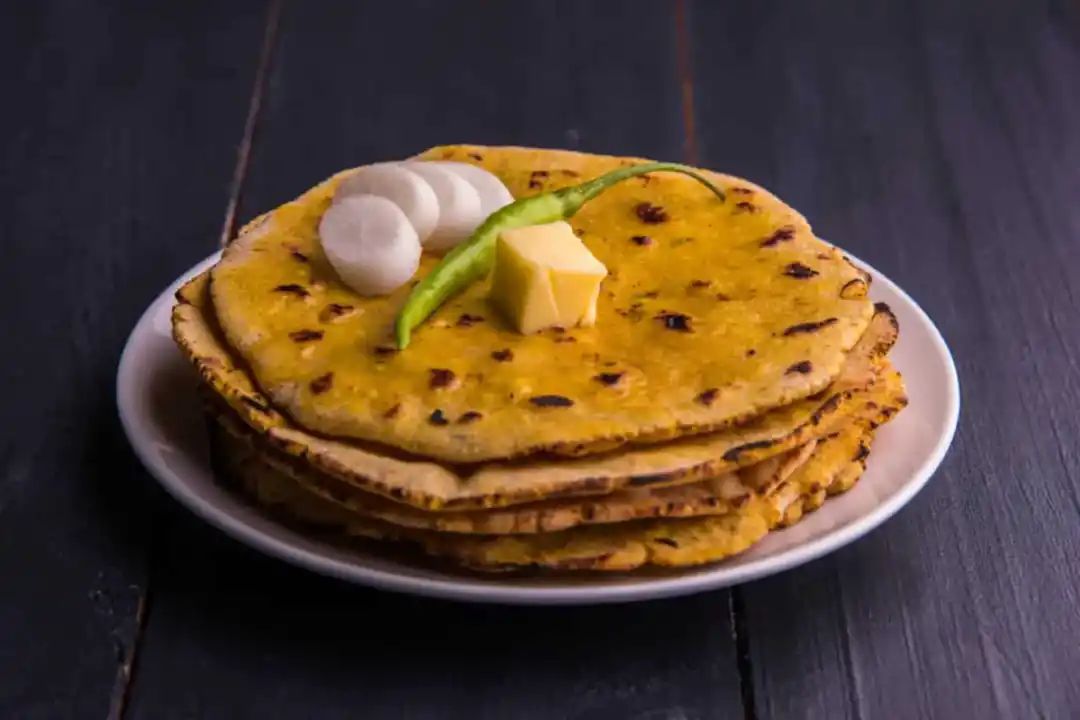
There’s a reason why everybody loves winter. It is the time to indulge in all those robust, greasy delicacies as much as enjoy the wholesome wealth of greens that arrive during the season.
But first, let’s investigate why Makki Ki Roti is more challenging to cook than plain roti. The flour itself is the main issue. Makki Ki Roti is far more difficult to roll and cook than Gehun Atta Roti. This is a result of the akki atta (maize flour) dough’s poor binding ability, which causes it to repeatedly break when being formed into a roti. However, using our advice will enable you to knead a makki atta dough that is soft and smooth and won’t crumble.
1.Warm the flour in a pan of simmering water before beginning to knead the dough. Stir continuously until it begins to take shape. After that, seal the pan’s lid and wait for the steam to accumulate. After finishing, extinguish the flame after a few minutes. Flour should be removed and softened by kneading. This is one of the expert advices that a lot of Punjabi ladies use.
2.You can simply use lukewarm water to knead the dough and make it soft if the aforementioned tip seems like a time-consuming task. Just sprinkle salt into the flour and combine with lukewarm water to knead. But be careful not to add too much water at once; otherwise, it won’t be firm.
3. Once the dough is done, begin rolling small roundels out of it while using very little pressure. Even while it could take some time, it will be worthwhile when you finally have smooth, round rotis.
4. When placing the roti on the tawa to cook, be sure to lift it carefully. There is a potential that it will break.
5. When frying on a tawa, wait until the first side is cooked through and crispy before turning it over to cook the other side. There is less likelihood of the roti tearing apart if it is slightly crispy.
Making Makki Ki Roti with our recipe here and serving it with Sarson Ka Saag this winter will be simple now that you have all the information you need.










